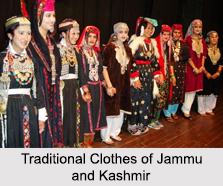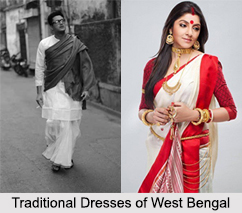 Costumes of Delhi
Costumes of Delhi
Delhi, the capital city of India, is renowned for its rich cultural heritage and diverse population. With people from various regions of the country calling Delhi their home, the city has become a mini-world, a melting pot of traditions and cultures. The costumes of Delhi beautifully reflect this unity in diversity, combining elements from South India, North India, and the Eastern states. The traditional costumes of Delhi with the influence of modern trends and the unique fusion of old and new designs, makes Delhi`s costumes truly exceptional.
Costume for Women in Delhi
Delhi`s traditional costumes for women primarily consist of the salwar, kameez and saree. The salwar kameez, a dress comprising baggy trousers and a long tunic, is adorned with a cloth-piece called a dupatta, which covers the front upper portion. This costume, widely popular among girls, was introduced to India during the Turko-Iranian rule of the Delhi Sultanate. Today, the salwar kameez in Delhi showcases modern innovations, such as sequined embroidery, mirror work, ari work, cut-work, and hand-painted designs. Renowned dress-designers like Ritu Kumar, Neeta Lulla, and Sabyasachi Mukherjee have added their magic touch, incorporating Zardozi embroidery—a Persian form of embroidery using gold or silver thread. This exquisite embroidery enhances the allure of costumes like sarees, salwar kameez, ghagra lehenga cholis, and kurta-pajamas.
Delhi`s women are not confined to traditional attire alone. Their wardrobes also feature Western garments like jeans, tops, shirts, T-shirts, and skirts, reflecting the city`s fashion-conscious youth. Additionally, semi-precious jewelry, including Kundan work crafted by skilled artisans from Jaipur and Rajasthan, has become a passion for women in Delhi.
Costume for Men in Delhi
Men in Delhi prefer traditional costumes such as kurta pyjamas and sherwanis. The older generation proudly dons attire like dhotis, kurtas, sherwani-salwars, and kurta-pajamas, which not only preserve their cultural heritage but also communicate their Indian identity and values. An iconic example is Jawaharlal Nehru, India`s first Prime Minister, who popularized the Nehru collar and cap, which emphasized his role as a national leader.
On the other hand, the younger generation in Delhi leans toward formal shirts, trousers, jeans, and T-shirts as their daily attire, including in the workplace. However, on ceremonial occasions, they embrace ornate sherwani-churidars, dhoti-kurtas, or kurta-pajamas, often opting for designer or boutique collections. Men also accentuate their style with accessories like bangles, wristbands, and stylish wristwatches. Traditional shoes like Nagra shoes are worn with sherwanis to achieve a regal appearance on special occasions.
Modern Influence on Costumes of Delhi
Contemporary costumes in Delhi have witnessed the influence of modern trends, resulting in a fusion of old and new. The city`s costume-lovers are drawn to the expanding range of patterns and designs available, making Delhi a dream-destination for fashion enthusiasts. Fashion Designers have played a significant role in redefining Delhi`s costumes, incorporating contemporary elements while maintaining the essence of traditional attire.
Apart from the traditional costumes, Delhi`s markets, shops, and malls offer a wide variety of modern-styled attire. The blend of contemporary fashion with traditional elements has become the hallmark of Delhi`s costumes. The amalgamation of cultures, tastes, and preferences in Delhi has resulted in the emergence of a cosmopolitan and diverse wardrobe. The city`s costumes serve as a style statement and set the standard for the clothing industry across the nation. The costumes of Delhi showcase a manifold of cultural and ethnic identities, despite their primarily global look. The costumes not only reflect the fashion consciousness of the city`s youth but also represent the values and traditions of its residents.
Famous shopping Centers in Delhi
Just like its unique preference of costume, Delhi is renowned for its vibrant markets and shopping destinations where costumes are widely purchased and preferred by residents, as well as visitors from across the nation and around the world. One such popular market is Janpath and the nearby Tibetan Market, which offer a wide range of ethnic clothing, jewelry, and accessories.
Dilli Haat is another destination known for its traditional garments, and regional specialties from different parts of India. Chandni Chowk, with its bustling lanes and narrow alleys, is famous for its traditional fabrics, embroidered garments, and bridal attire. Sarojini Nagar and Lajpat Nagar are known for their affordable yet trendy fashion options, attracting a young and fashion-conscious crowd. Shankar Market is renowned for its exquisite fabrics, including silk and brocade, while offering a variety of traditional and contemporary costumes.
Delhi`s costumes encapsulate the spirit of unity in diversity, reflecting the cultural richness and diversity of the city. The traditional costumes of Delhi, such as salwar kameez, sarees, and sherwanis, have deep historical roots and have evolved over time with modern influences.
The costumes of Delhi are more than just garments; they are an expression of identity, tradition, and personal style.





















